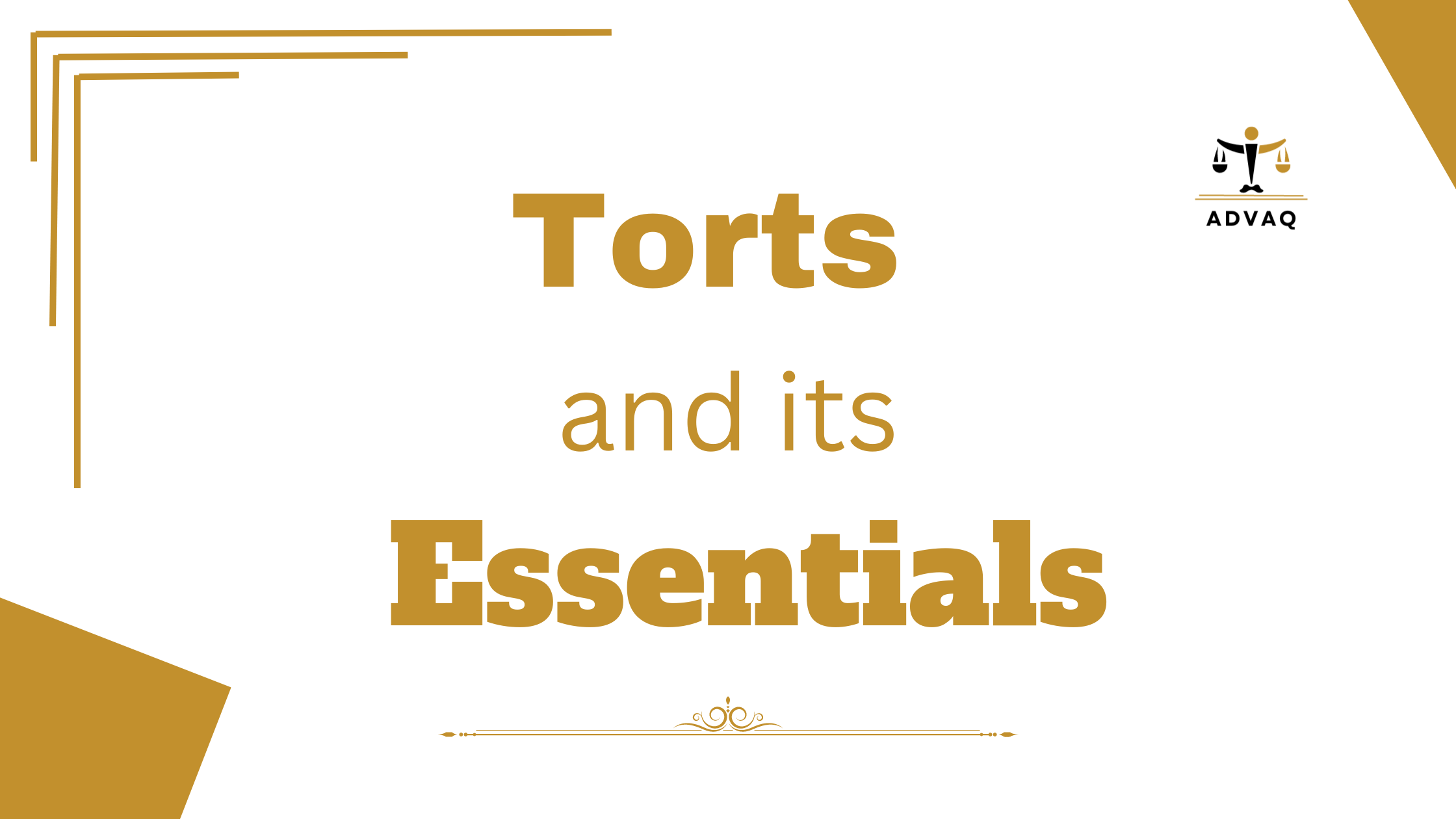INTRODUCTION
The word “Tort” is a French word. It is derived from the Latin word “Tortum” which means “to twist” or “wrong”. A tort is a civil wrong for which a remedy is available to the wronged person in the civil courts.
For example, a duty of care to other road users is imposed by law on all drivers. An occupier of property owes a duty of care to all visitors on his premises.
MEANING OF TORT
The word Tort means
Any act that somebody does to somebody else that is not criminal, but that can lead to an action in a civil court of law.
DEFINITION OF TORT
According to Ratanlal
A tort is an act or omission which prejudicially affects a person in some legal private right.
AIMS AND OBJECTIVES OF TORT LAW
Tort Law is a mixture of law values and legislative ratification. Tort Actions are not dependent upon an agreement between the parties. They are brought into court by private citizens.
There are four aims that tort law serves. They are as follows;
- It reimburses sufferers for wounds due to the functioning of others.
- It moves the cost of wounds to individuals who have inflicted harsh attitudes on them.
- The law does not allow careless and risky attitudes in the future.
- It justifies all those legal rights and interests that have been either reduced or compromised.
EXAMPLES OF TORTS
The most common examples of torts are the following:
Trespass to Person: It imposes a duty on one person not to assault or battery or falsely imprison another person.
Trespass to Land: It imposes a duty on one person not to interfere directly with another person’s land.
Negligence: It is a type of tort that imposes a duty on one person to take care, not to injure another person or another’s property.
Defamation: In this type, the duty is imposed on a person to take care of another person’s fame. So, it is immoral to injure another person’s fame.
KINDS OF TORTS
Generally, torts are of three kinds. They are discussed as follows.
1. TORTS ACTIONABLE PER SE
The defendant is held liable nearly because he does a particular act, even though the plaintiff has not suffered the slightest harm.
Example: The act of trespassing on another’s land is actionable even though the plaintiff has suffered not the slightest harm.
2. TORTS NOT ACTIONABLE PER SE
These torts are actionable only on proof of actual damage, and the defendant is held liable only if, in consequence of his act, the damage is inflicted on the plaintiff.
Example: Slander is, in most cases, not actionable without proof of actual or special damage.
3. FELONIOUS TORTS
“When an act is both a tort and a crime, it is called a “Felonious Tort”.
Sometimes, one wrongful act may constitute both a tort and a crime. So, there can be two different kinds of remedies. The wrong-doer may be punished criminally and also compelled in a civil action to pay damages to the aggrieved party.
For example, Assault defamation, malicious prosecution, etc are the example of felonious torts.
ESSENTIALS OF A TORT
The essentials of a tort are the following.
1. CIVIL WRONG
A tort is a Civil wrong. It is independent of a breach of a contract or a breach of trust.
NOTE: A breach of trust and a breach of contract are civil wrongs but they are not torts.
2. INFRINGEMENT OF RIGHT
A tort is an infringement of a right in rem and not of a right in personam.
Right in Rem: It is a right that is vested in the definite person. It is available to a person against the world at large. i.e. one’s rights not to be defamed or assaulted, etc.
Right in Personam: It is a right that is available to the definite person and available against some specific person or body. Thus, mutual rights arising out of a mutual agreement between the parties are in personam.
3. RIGHT FIXED BY LAW
The right which is infringed must be a right that is fixed by the law independent of the consent of the parties.
4. COMMON LAW ACTION
The action available in respect of such a violation of rights should be a common law action.
5. REMEDY
As the maxim says, “There is no wrong without a remedy”.
So, the remedy should be by way of un-liquidated damages. If there is no remedy. there is no wrong.
WRONGS THAT ARE NOT TORTS
There are four classes of wrongs, which stand outside the sphere of a tort. They are as follows;
1۔ Wrongs that are exclusively criminal are not torts
2۔ Civil wrongs, which create no right of action for unliquidated damages, but give rise to some other form of civil remedy
3۔ Civil wrongs which are exclusively the breach of contract are not torts
4۔ Civil wrongs which are exclusively the breach of trust or of some other merely equitable obligation
CONCLUSION
The tort is an act that is done by the defendant whereby he has, without just cause or excuse, caused some form of harm to the plaintiff. The law of torts prevents people from hurting one another, whether in respect of their property, their persons, their reputations, or anything else, which is theirs.
FREQUENTLY ASKED QUESTIONS
How does a tort differ from a contract? Is the distinction between the two becoming blurred?
(2019-A 5 years)
A tort is a civil wrong but not all civil wrongs are torts. What are the ingredients needed to establish liability in tort?
(2017-A)
What are the ingredients of tortuous liability?
(2015-S)
Define Tort and state its essential elements.
(2014-S)
What do you understand by the law of Torts? What are the essentials of torts?
(2012-A)
Define Tort(s). How it differs from the law of crime?
(2010-S, 2012-S, 2013-A)
Define Tort(s). What are the essentials of Tort(s)?
(2010-A)
What is the Tort? Explain its ingredients.
(2013-A)


